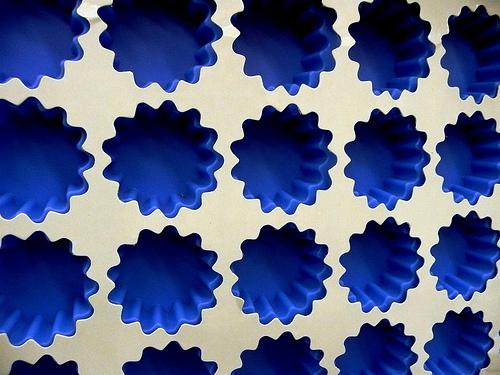Send your question to Umbra!
Q. Dear Umbra,
Can I recycle my silicone hotwater bottle? Also is it really OK cooking in silicone baking dishes? What IS it?
Marcea C.
Totnes, England
![]() Photo: Scorpions and CentaursA. Dearest Marcea,
Photo: Scorpions and CentaursA. Dearest Marcea,
Something about your final question has caught my fancy — the wistful perplexity, the beseeching helplessness, the fact that I’m imagining you asking it with a lovely English accent. Therefore I’ve decided this simple query should be the new Consumer Mantra, something we ask ourselves every time we are staring at a store shelf or a product label or a tempting thingamabob: “What IS it?” If we don’t know, we don’t buy.
In this case, the non-scientist answer is fairly simple. Silicone is a synthetic product made primarily from naturally occurring resources: oxygen, carbon, hydrogen, and silicon, commonly found in sand*. It was pioneered in the late 1800s by a countrymate of yours, one Frederick Kipping, who referred to his creations as “sticky messes.” Ironicalicious, since today we hail silicone bakeware for its nonstick qualities.
So should we embrace this seemingly miraculous product as wholeheartedly as we have? The short answer is, the jury is still out.
Manufacturers of course swear that it is safe, and the Food and Drug Administration has cheerfully approved its use. Consumers like it because it is, based on what we know so far, safer than plastic and Teflon, and also comes in bright, pleasing colors. But a few studies have shown that these pretty products can indeed release small amounts of nasties, especially at higher temperatures, when first used, and when in contact with high-fat foods — beware, meatloaf lovers! I checked with Jeff Gearhart, research director at the Ecology Center, who points out that while the science is still developing, the compounds in question bioaccumulate — they build up in our bodies — and can present clear hazards, including estrogenic effects (note to self: potential band name).
I would also be remiss if I didn’t point out that a passionate contingent of parrot lovers swears that fumes from baking with silicone can kill these little pets. This has actually been proven true of Teflon — DuPont even has tips for keeping birds safe on its site. So if you subscribe to the “parrot in a coal mine” approach to life, that’s food for thought.
What are your alternatives to the vivid, versatile silicone? As is so often true, the best choices are the oldies but goodies: stainless steel, glass, cast iron, and stoneware. Cook like your grandmother cooked! Only maybe lay off the lard and the potted-meat products.
As to whether you can recycle silicone, the technical answer is yes, it is recyclable. That does not, of course, mean that the good fellows at the recycling center there in Totnes are willing to recycle it. As always, I advise you and all readers with such quandaries to check with the appropriate local agency.
Polymerrily,
Umbra
* Thanks to reader Ed D. for correcting my original assertion that silicon and oxygen were the only elements involved in making silicone rubber.


